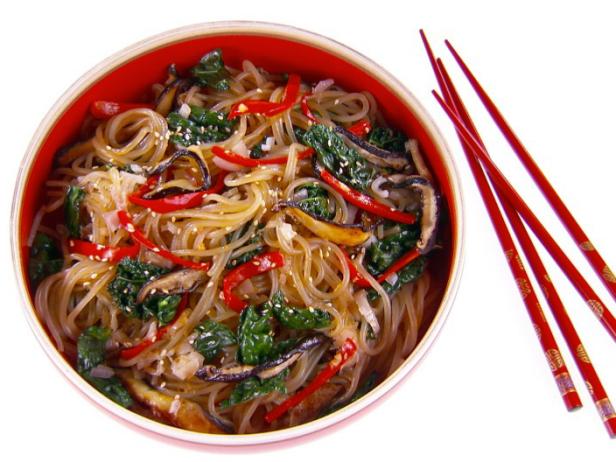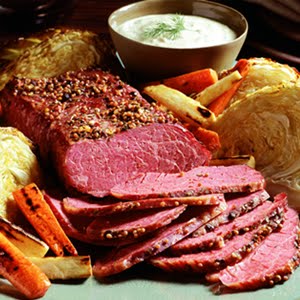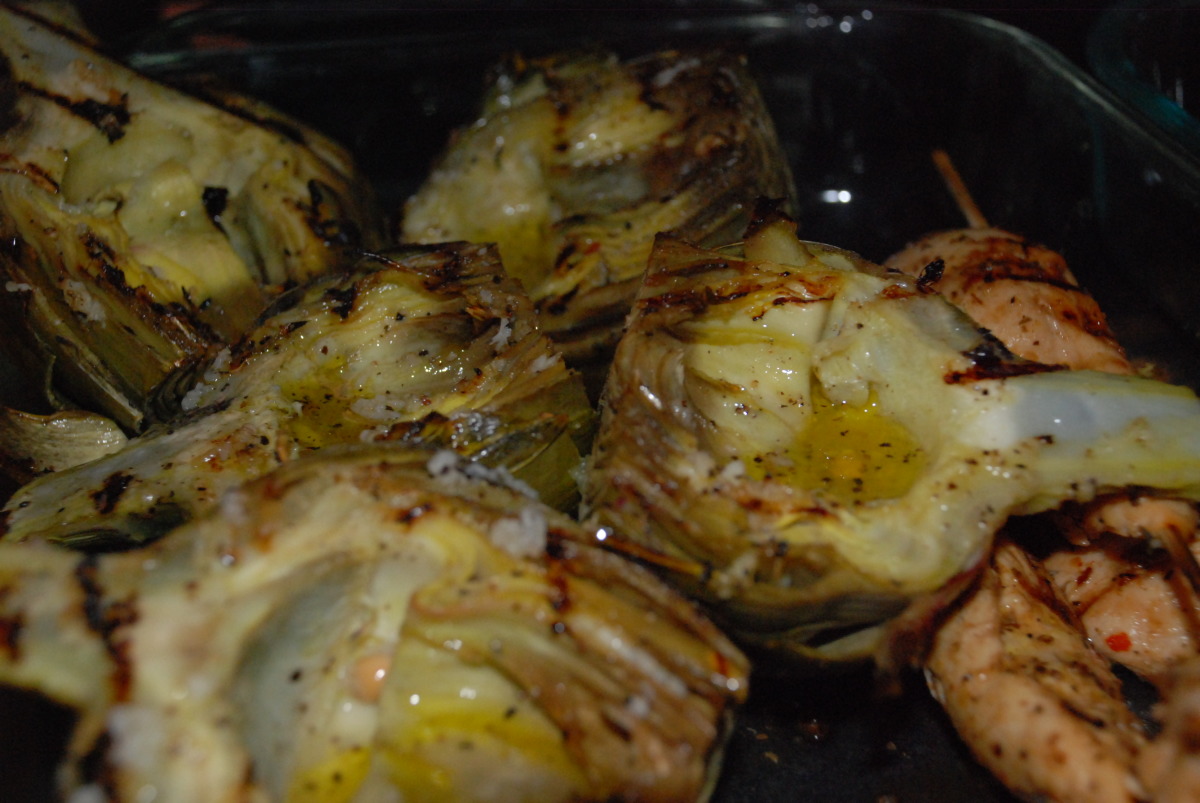Japchae, a delightful Korean dish, is a colorful and flavorful dish made with dangmyeon (glass noodles), various vegetables, and a savory sauce. It's a staple dish served at Korean celebrations and gatherings, and its vibrant appearance and delicious taste make it a favorite among Koreans and food enthusiasts worldwide. The chewy texture of the glass noodles, combined with the crunchy vegetables and the sweet and slightly tangy sauce, creates a harmonious and satisfying eating experience. This article presents two variations of japchae: a traditional version and a modern vegetarian version. Both recipes offer step-by-step instructions, ingredient lists, and helpful tips to ensure successful preparation. Get ready to embark on a culinary journey and discover the vibrant flavors of this Korean noodle dish.
Here are our top 5 tried and tested recipes!
SPRING VEGETABLE JAPCHAE (KOREAN GLASS NOODLES)

Japchae is a savory Korean stir-fry with mixed vegetables, beef and sweet potato noodles. Also known as glass noodles, sweet potato noodles can be found in Asian markets; once cooked, the noodles turn translucent, light and chewy. (They are also wheat-free, so they are a great option for those avoiding gluten.) The noodles are cooked first, then sit in the sauce, absorbing all of the garlicky sesame and soy flavors like a sponge. This springtime japchae celebrates crisp asparagus and snap peas. Japchae can be made a few hours ahead and served at room temperature, making it the perfect dish for potlucks and picnics.
Provided by Kay Chun
Categories dinner, lunch, noodles, vegetables, main course, side dish
Time 30m
Yield 4 servings
Number Of Ingredients 15
Steps:
- Make the sauce: In a small bowl, combine soy sauce, garlic, sugar, sesame oil and 1/2 teaspoon pepper.
- In a large pot of boiling water, cook noodles until tender and translucent, 8 to 10 minutes. Transfer to a colander and run under cold water to stop the cooking. Drain well and transfer to a large bowl. Add half of the sauce (about 3 tablespoons) and toss to evenly coat.
- In a large skillet, heat 2 tablespoons safflower oil over medium. Add onion and carrots, season with salt and pepper and cook, stirring occasionally, until softened, about 3 minutes.
- Add mushrooms and half the remaining sauce (about 1 1/2 tablespoons) and cook, stirring occasionally, until tender and lightly golden, about 3 minutes. Transfer the mixture to the bowl with the noodles.
- Add the remaining 1 tablespoon safflower oil and the bell pepper to the skillet and cook, stirring frequently, for 2 minutes. Add snap peas and asparagus, season with salt and pepper, and cook, stirring occasionally, until vegetables are crisp-tender, about 2 minutes. Add the spinach to the skillet and stir until wilted, 1 to 2 minutes. Transfer the mixture into the bowl with the noodles. Add the remaining sauce and toss until well combined. Season with salt and pepper.
- Divide japchae among bowls and garnish with sesame seeds. Serve warm or at room temperature.
JAPCHAE (STIR-FRIED STARCH NOODLES WITH BEEF AND VEGETABLES)
Steps:
- Clean all the ingredients. Cut the carrot into matchsticks. Thinly slice the onion. Run the knife through the white parts of the scallions lengthwise, if thick, and then cut into about 2-inch long pieces. Remove the stems from the mushrooms, and slice into 1/4-inch thin strips. Cut the meat into thin 2-inch long strips.
- Combine all the sauce ingredients in a small bowl and mix well until the sugar is dissolved.
- In a large non-stick pan (see note 2), bring about 5 cups of water to a boil, and cook the noodles until completely translucent and soft (6 to 8 minutes). Drain in a strainer and rinse under cold running water. Drain well. Roughly cut the noodles with a pair of kitchen shears or a knife into 6 -7 inch lengths. Transfer to a large mixing bowl. Mix well with 3 tablespoons of the prepared sauce.
- Fill the same pan with 2 cups of water. When water boils, blanch the spinach only until wilted. Drain quickly and shock in cold water. Squeeze out water, run a knife through the squeezed spinach a couple of times, and lightly season with salt.
- Add 1/2 tablespoon of oil to the skillet, and stir fry the noodles over medium to medium high heat, stirring frequently, until translucent and a bit sticky (about 4 minutes). Transfer back to the mixing bowl.
- Add 1/2 tablespoon of oil to the pan, and stir fry the carrot over medium high heat, sprinkling with a pinch of salt. When the carrot sticks are half way cooked, about a minute, push them to one side of the pan to make room for the onion slices. Stir-fry the onion slices until translucent, sprinkling with a pinch of salt. Stir-in the scallion and cook briefly. Do not overcook. The vegetables should be crisp. Transfer to the bowl with the noodles.
- Add the beef and mushrooms along with 2 tablespoons of the prepared sauce and cook until the meat is cooked through, 2 - 3 minutes. Transfer to the bowl with the noodles.
- Add the spinach and the remaining sauce to the bowl with all other prepared ingredients. Toss well by hand. Adjust the seasoning to taste by adding a little more (start with 1/2 teaspoon) soy sauce and/or sugar as necessary.
EASY JAPCHAE (KOREAN STIR-FRIED NOODLES AND VEGETABLES)
Korean japchae, sweet potato starch noodles stir fried with vegetables, is a popular and delicious dish that pretty much everyone likes. I never saw someone who tasted it for the first time who didn't like it right away. That's a high compliment! This recipe is for a quick and easy version of...
Categories Main course
Time 38m
Yield Serves 4 to 6
Number Of Ingredients 10
Steps:
- Combine your choice of meat, the soy sauce, brown (or white) sugar, and toasted sesame oil in a bowl. Mix well by hand until the sugar is well melted. Cover and let it sit for 5 minutes.
- Heat a skillet and cook the marinated meat, stirring with a wooden spoon for about 4 to 5 minutes until cooked thoroughly. Remove from the heat and set aside.
- Whisk the eggs and salt in a bowl, then strain into another bowl so it's totally smooth. Discard the stringy bits remaining in the strainer.
- Heat the vegetable oil in a large nonstick skillet over medium-high heat and swirl it around to evenly coat the skillet. Wipe off the excess oil with a paper towel. Turn down the heat to low and add the egg mixture to the skillet. Lift and tilt the skillet around so that the egg spreads into a large circle that covers the bottom of the skillet. Let it cook for a minute until the bottom of the egg pancake is lightly cooked but not brown. Flip the egg pancake and remove from the heat. Let it cook by the heat remaining in the skillet for a few minutes.
- Transfer to a cutting board. Let the pancake cool for a few minutes, then slice it into thin strips. Cover the strips with plastic wrap to keep them from drying out.
- Combine the soy sauce, brown (or white) sugar, ground black pepper, and garlic in a bowl and mix well with a spoon until the sugar is dissolved. Cover and set aside.
- Drain the wood ear mushrooms and put them on your cutting board. Cut off the tough stems and discard them. Cut the caps into bite-size pieces and put them into the pot.
- Add the king oyster mushrooms, carrot, and onion to the pot. Add ¼ cup vegetable oil and ¼ cup water to the pot. Mix well everything in the pot with both hands so that all the vegetables and mushrooms are nicely coated with oil. This will not only prevent the ingredients from turning brown from the seasoning sauce, but will also keep them from burning when you cook. Spread the spinach over top in an even layer.
- Drain the noodles and cut them into 5- to 6-inch lengths with scissors. Place them on top of the spinach in the pot. Drizzle the seasoning sauce on top of the noodles.
- Cover and cook for 10 minutes over medium-high heat.
- Open the lid and stir and gently toss all the ingredients with a wooden spoon and tongs for 1 to 2 minutes, until all the liquid has evaporated and the noodles are nicely cooked and shiny. Add the cooked meat (if using), 1 tablespoon sesame oil, and 1 tablespoon sesame seeds. Gently toss the mixture so that all the ingredients are evenly distributed. Transfer to a large platter.
- Garnish with the egg paper strips (if using) and sprinkle with remaining 1 teaspoon sesame seeds, and serve. Leftovers can be refrigerated for up to 3 days. To reheat, stir-fry in a skillet with a few tablespoons water or vegetable oil.
VEGETARIAN KOREAN NOODLES (JAPCHAE)

Provided by Giada De Laurentiis
Categories main-dish
Time 40m
Yield 4 to 6 servings
Number Of Ingredients 16
Steps:
- For the sauce: Combine the sugar, tamari, rice wine vinegar, sesame oil and ginger in a small bowl. Whisk until the sugar is dissolved. Set aside.
- For the noodles: Bring a large pot of salted water to a boil. Add the noodles and stir to help submerge them. Cook until the noodles are just barely cooked, 6 to 8 minutes. Drain and rinse with cold water. Using kitchen shears or a clean pair of scissors, cut the noodles into approximately 8-inch lengths. Set aside.
- Heat the grapeseed oil in a large skillet over high heat. Add the oyster and shiitake mushrooms and cook, stirring often with a wooden spoon, for about 5 minutes, or until the mushrooms are beginning to brown. Add the shallots and 1/4 teaspoon salt and cook until fragrant, another 2 minutes. Add the red pepper, garlic and scallions to the pan, reduce the heat to medium-high and cook for an additional 3 minutes, or until the peppers are beginning to soften. Add the kale and the cooked noodles and saute another 3 minutes, stirring often to coat the noodles in the oil and to wilt the kale. Add the sauce and toss to coat. Top with sesame seeds if desired.
JAPCHAE KOREAN NOODLE WITH VEGETABLE

My slightly sweet version of the vermicelli noodle loaded with veggies and meat (optional). Delicious as a main course with rice and kimchi or as a banchan (side dish) to complement nearly any Korean meal. I adapted it from Maangchi to suit my taste. *Please see directions for notes on ingredients*
Provided by Emily Han
Categories Korean
Time 1h10m
Yield 5 Cups, 4-6 serving(s)
Number Of Ingredients 14
Steps:
- Note: Noodles should be (2) 3" bundles of Dangmyun, Korean potato starch noodle. This is the only noodle that should be used for the dish, they are translucent gray color and are hard.
- 1. Boil a large pot of water and drop the dangmyun in for 3-4 minutes (Test before removing; noodle should be soft but still chewy).
- 2. Strain noodles, reserving hot water to be put back in pot. Rinse noodles with cold water and put in large bowl #1. Cut noodles with scissors so they are more manageable. Add mixture of 1T sesame oil, 1T soy sauce and 1T corn syrup. Mix well. (I always just use my hands. Messy, but the noodles are slippery and it coats them the best).
- 3. Return water in pot to a boil. Drop in entire bag of spinach, boil for one minute only. Remove, strain and squeeze out all water with hands. Place spinach in large bowl #2 along with 1/2T sesame oil and 1/2T soy sauce.
- 4. Meanwhile in a pan, heat olive oil (not sesame oil!) and stirfry veggies one at a time in the following order: carrot, onion, mushroom, then green onion. Be sure to cook just to crisp tender and don't let them burn. After each is done, put them in bowl #2 with the spinach. Stir after each addition.
- 5. If you choose to add meat (traditionally beef), you should slice it very thinly and stir fry it with a little soy sauce, sugar, and garlic to taste. Add it to bowl #2.
- 6. Pour noodles into bowl #2 with the veggies and mix.
- 7. Make a mixture of 4T soy sauce, 4T sugar, 2T sesame oil, and 2t pepper. Stir well, and pour immediately over the noodles. Mix well with your hand or tongs until all the noodles take on a uniform color.
- 8. Make sure to taste along the way, and make adjustments accordingly. Hope you enjoy~!
Tips:
- Use fresh and high-quality ingredients: This will make a big difference in the flavor of your japchae. Look for crisp vegetables, tender noodles, and flavorful meat.
- Don't overcook the noodles: Japchae noodles should be cooked al dente, or slightly firm to the bite. Overcooked noodles will be mushy and unappetizing.
- Use a large pan or wok: This will give you plenty of room to stir-fry the noodles and vegetables without overcrowding them.
- Stir-fry the noodles and vegetables in batches: This will help to prevent them from sticking together and becoming overcooked.
- Add the sauce gradually: This will help you to control the flavor of the japchae. Start with a small amount of sauce and add more to taste.
- Serve japchae immediately: Japchae is best served hot and fresh. If you need to make it ahead of time, store it in the refrigerator for up to 2 days. When you're ready to serve, reheat it gently over medium heat.
Conclusion:
Japchae is a delicious and versatile Korean dish that can be enjoyed as a main course or a side dish. It's easy to make and can be tailored to your own taste preferences. With a little practice, you'll be able to make japchae that's just as good as your favorite Korean restaurant. So what are you waiting for? Give it a try today!
Are you curently on diet or you just want to control your food's nutritions, ingredients? We will help you find recipes by cooking method, nutrition, ingredients...
Check it out »
#time-to-make #course #main-ingredient #cuisine #preparation #main-dish #side-dishes #pasta #asian #korean #vegetarian #dietary #pasta-rice-and-grains #4-hours-or-less
You'll also love









